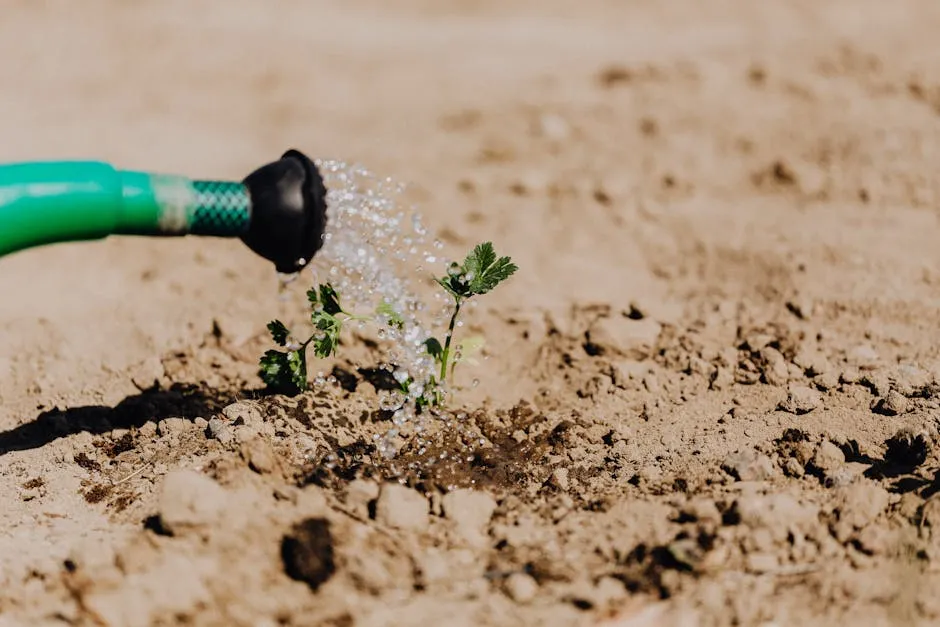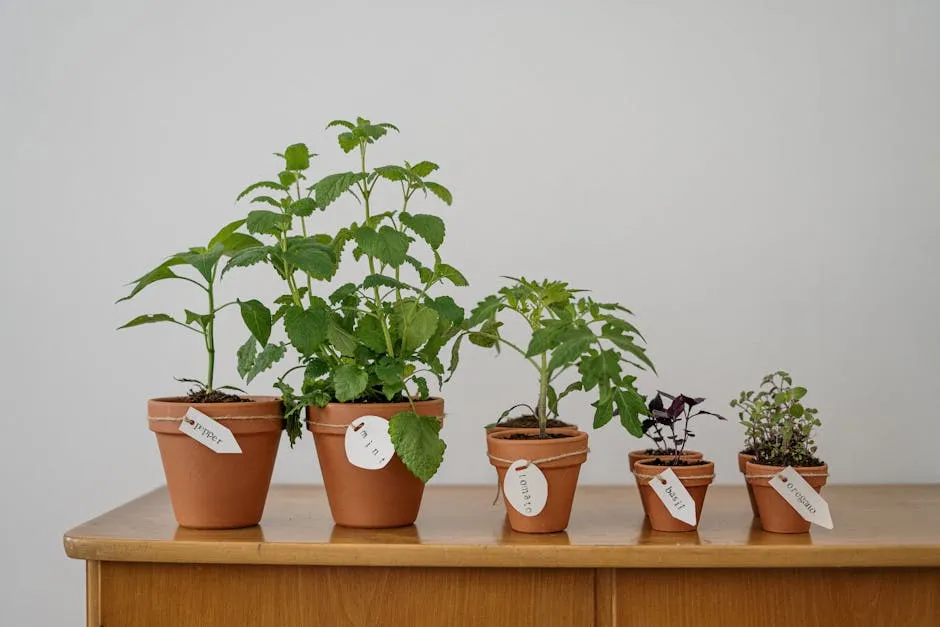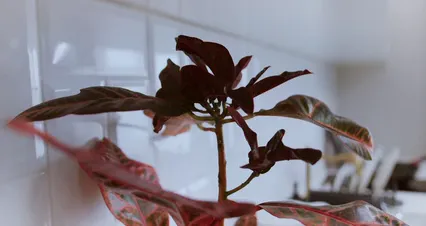

Comprehensive Guide to 150 Watt Grow Lights for House Plants
Introduction
Indoor gardening is on the rise. More people are growing plants at home. Artificial lighting plays a crucial role in this trend. A 150-watt grow light can significantly enhance your house plants’ growth. These lights provide the right intensity and spectrum for healthy development. Full-spectrum lights mimic natural sunlight. They boost plant health and productivity, ensuring vibrant leaves and blooms.
And if you’re serious about your plant game, consider pairing your grow light with a complete Indoor Gardening Kit. This will give you all the tools you need to get started on your indoor jungle!

Summary and Overview
In this guide, you’ll learn all about 150-watt grow lights. We’ll cover why choosing the right one matters. These lights are versatile, suitable for various house plants. You’ll discover their energy efficiency and cost-effectiveness. We’ll also provide usage tips to help you maximize your plants’ growth. Expect product reviews and specifications to aid your decision-making.
To help your plants thrive, don’t forget to nourish them with Organic Plant Food. Because what good is a grow light if your plants are starving?

Understanding 150 Watt Grow Lights
What is a 150 Watt Grow Light?
A 150-watt grow light is designed for indoor plant growth. It provides sufficient light intensity for various plants. Wattage indicates the power consumption, which correlates to light output. This output directly influences plant growth. LED grow lights are popular choices for indoor gardening. They provide high light intensity while consuming less energy than traditional bulbs.
Benefits of Using 150 Watt Grow Lights
Using a 150-watt grow light offers several benefits. First, they are energy-efficient compared to higher wattage lights. They also work well during all growth stages, from seedlings to flowering. Additionally, they produce less heat, reducing the risk of burning plants. Statistics show that energy savings can be notable with these lights. Many users report improved plant growth and yield, making them a smart investment.
Speaking of investments, consider a Light Meter for Plant Growth. It’s a handy tool to ensure your plants are getting just the right amount of light.

Types of 150 Watt Grow Lights
Full Spectrum vs. Specialized Spectrum
When it comes to grow lights, full spectrum options shine brightly. They mimic natural sunlight, providing a balanced range of wavelengths. This helps plants in all growth stages, from seedlings to flowering. Full spectrum grow lights support photosynthesis effectively. They’re ideal for diverse plant types, ensuring robust growth and vibrant colors. On the other hand, specialized spectrum lights focus on specific needs. For instance, red and blue spectrum lights excel during flowering and vegetative stages. While these lights can be effective, they may not cater to all plants. Choosing the right light spectrum depends on your plant’s needs. A full spectrum light often offers greater versatility and benefits.
Popular Brands of 150 Watt Grow Lights
Several brands stand out in the 150-watt grow light market. Mars Hydro is a top contender. Their TS 1000 model is praised for its efficiency and coverage. VEVOR also offers high-quality full spectrum lights, perfect for various indoor plants. SINJIAlight is another notable brand, known for its lightweight and waterproof designs. Each brand has unique features, catering to different plant lighting needs. When searching for the best grow lights, consider these top brands. They provide reliable options that enhance your indoor gardening experience.
And while you’re at it, don’t overlook the importance of a good Plant Care Book to help you understand your plants’ needs better!

How to Choose the Right 150 Watt Grow Light
Factors to Consider
Selecting the right 150-watt grow light requires careful thought. Start by considering the wattage and light spectrum. Full spectrum lights are versatile, supporting all growth stages. Assess the coverage area too; ensure the light reaches all your plants. Energy efficiency is another crucial factor. LED options consume less energy, saving you money in the long run. Think about your specific plant lighting needs, as different plants may require varied light intensities. A well-informed choice will lead to healthier plants.
Reading Product Specifications
Understanding product specifications is vital for making informed decisions. Look for key terms like PPF, which stands for Photosynthetic Photon Flux. This indicates the light’s effectiveness for plant growth. Efficiency ratings tell you how much light is produced per watt consumed. Lifespan is another critical factor; longer-lasting lights save you money over time. Don’t overlook warranty details, as a solid warranty reflects product quality. Always check customer support options too, ensuring help is available when needed. By paying attention to specifications, you can choose the best light for your indoor garden.

Setting Up Your 150 Watt Grow Light
Optimal Placement and Height
Finding the right placement for your grow light is crucial. Start by considering your plants’ needs. Taller plants require higher light, while shorter ones thrive closer. A general guideline is to hang the light about 12-24 inches above the canopy. As your plants grow, adjust the height accordingly. For seedlings, keep the light closer, around 12 inches, to encourage healthy growth. Once they mature, you can raise it to about 18-24 inches.
Monitor your plants regularly. If leaves start curling or turning yellow, you may need to adjust the distance. Using a Soil Moisture Meter can help determine the best intensity for your plants. Remember, different species have varying light preferences. Research specific needs to optimize your grow light placement. With careful adjustments, your plants will flourish.

Recommended Usage Duration
The duration for running your grow light depends on the type of plants you have. Most house plants enjoy around 12-16 hours of light daily. For seedlings, aim for 14-16 hours to help them establish strong roots. During flowering, many plants benefit from slightly less light, typically 12 hours.
To maintain consistency, consider using a Grow Light Timer. This ensures your plants receive regular lighting cycles. Timers also reduce the risk of human error. Set your timer according to your plants’ needs and adjust as necessary. Keeping a routine will improve your plant care routines and overall growth.

Best Practices for Using 150 Watt Grow Lights
Maintenance and Care
Maintaining your grow light is essential for optimal performance. Dust and dirt can accumulate on the surface, reducing light output. Regularly clean the light fixtures with a soft cloth. Avoid using harsh chemicals that may damage the surface.
Check the bulbs frequently for any signs of wear or failure. Replacing bulbs promptly ensures your plants receive adequate light. Additionally, inspect the wiring and connections for any damage. Keeping everything in good condition maximizes light efficiency and extends the lifespan of your grow light.
In summary, proper care will enhance your indoor gardening experience. A well-maintained grow light will provide the necessary support for your plants to thrive. With these best practices, you’ll enjoy healthy, vibrant plants all year round. Best practices for watering container gardens can complement your grow light care.

Troubleshooting Common Issues
Even with the best grow lights, problems can arise. Here are some common grow light issues and how to fix them.
1. Insufficient Light Output:
If your plants are stretching or leaning, they might not be receiving enough light. Check the distance between the light and your plants. Adjust it to ensure optimal coverage. A light meter can help determine the right intensity.
2. Leaf Discoloration:
Yellowing leaves can signal too much or too little light. If leaves burn or turn brown, the light may be too close. Move it further away. Conversely, if they appear pale, increase the light intensity or duration.
3. Slow Growth:
If your plants aren’t growing as expected, check the light spectrum. Full-spectrum lights are ideal for healthy growth. Ensure your light provides the necessary wavelengths for photosynthesis.
4. Flickering or Dimming:
Flickering lights can indicate a power issue or a failing bulb. Check the connections and try replacing the bulb if the problem persists. Ensure your setup is using the correct voltage.
5. Heat Issues:
Excess heat can harm your plants. If your grow light generates too much heat, consider using a fan or changing to a cooler LED option. This will help maintain a stable temperature.
By recognizing and addressing these grow light issues, you can ensure your house plants thrive under optimal conditions.
Conclusion
Choosing the right 150-watt grow light is essential for house plant success. These lights provide the necessary intensity and spectrum for vibrant growth. Proper usage can significantly enhance plant health and productivity.
Make informed decisions to elevate your indoor gardening experience. Enjoy the benefits of lush foliage and beautiful blooms with the right lighting setup. And while you’re at it, consider a Plant Humidifier to keep that humidity just right for your green friends!

FAQs
What types of plants benefit from a 150-watt grow light?
Many house plants thrive under a 150-watt grow light. Popular choices include succulents, orchids, and leafy greens. These lights support various growth stages, ensuring healthy development.
How much does it cost to run a 150-watt grow light?
The cost to run a 150-watt grow light depends on usage. If operated for 12 hours daily, it can cost around $15-20 monthly, depending on your local electricity rates. Always check your energy provider for accurate calculations.
Can I use a 150 watt grow light for seedlings?
Absolutely! A 150-watt grow light is perfect for seedlings. During the early stages, seedlings need ample light to promote strong root development. These lights provide the right intensity and spectrum for healthy growth. Using a full-spectrum light mimics natural sunlight. This helps seedlings grow sturdy and vibrant. You can position the light close to your seedlings, usually around 12 inches away. Regularly monitor their response to ensure they thrive.
Do I need to adjust the light as my plants grow?
Yes, adjusting the light is crucial as your plants mature. As they grow taller, you’ll want to increase the height of the light. This prevents burning and ensures they receive adequate light intensity. Start with the light about 12 inches above seedlings, then gradually raise it. For mature plants, a distance of 18-24 inches often works best. Keeping the right height promotes healthy growth and prevents stress.
Are 150 watt grow lights energy-efficient compared to traditional lighting?
Definitely! When compared to traditional HPS or MH grow lights, 150 watt LED options are more energy-efficient. For instance, HPS lights may consume up to 250 watts for similar performance. LED lights, like the 150 watt models, produce less heat and use less electricity. This translates to lower energy bills. Many users report significant savings after switching to LED lighting. Their efficiency helps the environment too, making them a smart choice for indoor gardening.
How long should I keep my grow lights on each day?
The duration for your grow lights depends on the plant type. Most house plants thrive with 12-16 hours of light daily. For seedlings, aim for 14-16 hours. This helps them establish a strong foundation. During the flowering stage, you might reduce light to around 12 hours. Using a timer is a great way to maintain consistency. This ensures your plants receive the proper light cycle for optimal growth.
Can I use multiple 150 watt grow lights for larger areas?
Using multiple 150 watt grow lights is highly effective for larger setups. If you have a spacious indoor garden, several lights can ensure even coverage. This promotes uniform growth across your plants. Consider the layout of your garden when positioning the lights. Overlapping light coverage helps eliminate shadows. With proper placement, multiple lights will enhance growth and yield in your indoor garden.
Please let us know what you think about our content by leaving a comment down below!
Thank you for reading till here 🙂
All images from Pexels



